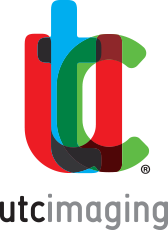Achilles tendon adaptation in cross-country runners across a competitive season

Authors
Stanley LE, Lucero A, Mauntel TC, Kennedy M, Walker N, Marshall SW, Padua DA, Berkoff DJ
Publisher
Scand J Med Sci Sports 2017 Apr 28.
Publishing detail
PMID: 28455943
Abstract
Ultrasound tissue characterization (UTC) is an imaging tool used to quantify tendon structural integrity. UTC has quantified Achilles tendon (AT) acute response to load in athletes; however, AT response to cumulative load over a season is unknown. The purpose of this study was to evaluate AT response across a four-month competitive season in collegiate cross-country (XC) runners. Participants (n=21; male=9, female=12; age=19.8±1.2 years; height=171.9±8.9 cm; weight=60.2±8.5 kg) were imaged using the UTC device with a 10-MHz linear-array transducer mounted in a tracking device. The device captures images at 0.2 mm intervals along the AT. UTC algorithms quantified the stability of pixel brightness over every 17 contiguous transverse images into four echo types (I-IV). A total of 168 scans (n=21, bilateral limbs) were performed monthly across the four-month season (Aug=M1, Sep=M2, Oct=M3, Nov=M4). Echo-type percentages (%) were calculated from each scan. Generalized estimating equations (GEE) linear regression models evaluated echo-type % change (β) over the season (M1=reference). Type I increased from M1 to M4 (β=9.10, P<.01; 95%CI: 7.01, 11.21) and Type II decreased from M1 to M3 (β=-2.71, P=.018; 95%CI: -4.96, -0.47) and M1 to M4 (β=-10.19, P<.01; 95%CI: -12.22, -8.17). Type III increased from M1 to M3 (β=0.42, P=.003; 95%CI: 0.19, 0.65) and M1 to M4 (β=0.49, P=.002; 95%CI: 0.18, 0.81), Type IV increased from M1 to M4 (β=0.57, P<.01; 95%CI: 0.29, 0.84). A positive adaptation in AT structural integrity was observed over the XC season, with a ~10% shift from Type II to Type I UTC echo types, suggesting AT resilience to a competitive season of repetitive loading in highly trained runners.